Brisbane’s most severe weather events often take place during the hot and humid summer months between December and February, but Brisbane actually spends most of the year in “storm season”. Officially, Brisbane’s storm season lasts from September to March, when cooler winter weather curbs the potential for heavy rain and flooding.
Brisbane’s summer months are notoriously unpredictable. One day you can be facing a clear and sunny day at 35 degrees; the next you’ll have a dark and heavy sky threatening to unleash rain, hail, strong winds, and more at a moment’s notice.
These storms can be quite a sight, and they can help ease the city’s oppressive humidity, but they do pose a notable risk to our homes. Poor preparation can increase the likelihood of homes sustaining damage and, more importantly, put the lives of our loved ones and ourselves in real danger.
The purpose of this guide is to provide you with essential knowledge to help you prepare for storm season. It will cover what you should do before, during, and after a storm.
In addition to this, we will give you context for how serious Brisbane storms can be by looking at notable storms from Brisbane’s past, and provide you with tips on how to assess any damage your roof has sustained before or after a storm.
Keep reading for everything you need to know before, during and after a storm.
Preparation should be undertaken throughout the year to ensure that you are storm safe because if you wait until a storm is going to hit, it may be too late do perform essential tasks like creating a storm kit or checking your roof for existing damage and weaknesses.
This way, when a storm does hit, you already know that you have done everything you can to keep your family and yourself safe.
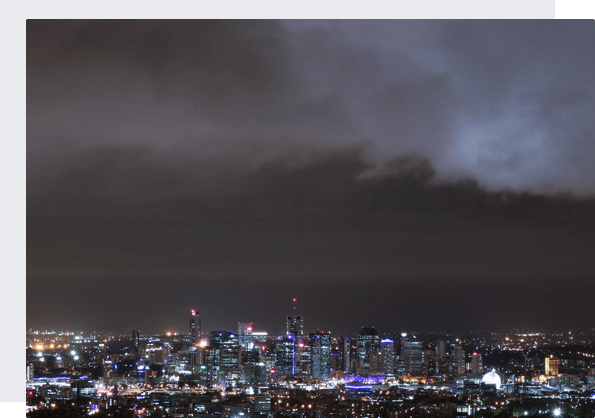
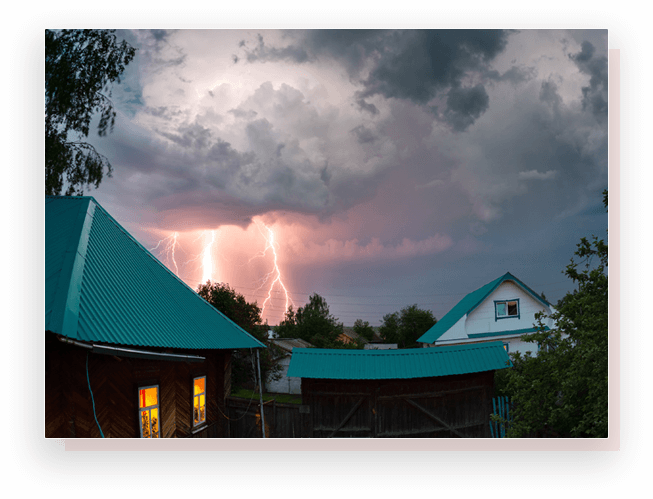
You will find it easier to deal with a storm as it happens now that you’re adequately prepared. Severe storm events don’t come along very often, but they come with a lot of force when they do so. This is why it’s handy to know what the most structurally sound part of your home is.
You should look for a room that has no external facing walls. Rooms that are on lower levels or built into the ground, such as a rumpus room or basement, may prove the most secure. If all your rooms have walls that face the outside, it would be smart to find the one with the smallest window. For most homes, that would be a bathroom.
Glass windows are prone to shattering in severe storm due to hail or flying debris, which would be extremely dangerous for any person in that room.
If any window in your home shatters, you should proceed with caution. Emergency Management Queensland suggests having plastic sheeting and duct tape on hand to tape the windows in the event they sustain some damage or shatter.
You need to be cautious and ensure that you don’t end up getting hurt in the process. If the wind is too strong, there’s a high risk of more glass shattering. If there’s hail, then it may be best to stay away from damaged or broken windows for the time being.
If water starts piling up, however, you may want to scoop some up and pour it down the drain. Be sure to wear strong gloves and protective footwear just in case some shards of glass have managed to conceal themselves in the water. The last thing you need to worry about is tending to a wound while protecting your home and family.
Do not go outside trying to find what the cause could be if your home loses power, it will only put you at risk of getting hurt. Even if the loss of power is specific to just your home, chances are you won’t be able to resolve the issue until the storm passes, anyway.
Blackouts during a storm are commonly the result of fallen or damaged power lines or a damaged electrical substation. The best thing you can do in such an event is turn off your appliances. This will help prevent a power surge when power is finally restored. Only try turning them back on to see if power has been restored intermittently. Do this every one or two hours.
Torches, lanterns and candles will come in handy if power is lost in the evening or during the night. When power is lost, the most important point to remember is that you shouldn’t panic.
You’re by no means shut off from the rest of the world, and most severe storms are fortunately short-lived. Even if a storm endures for a couple of days, your storm kit with non-perishable food and water will see you through.
The best piece of advice for waiting out any storm is to do exactly that – wait it out. The sense of not being able to do anything is frustrating, but the storm is a much too powerful foe. As long as you stay inside, you should be safe. If a storm poses a serious risk to your home (e.g. in a flood-prone area), authorities will inform you of this and suggest you leave your home until the storm ends.
You’ll want to have a few things on hand to pass the time while you wait it out. A typical time killer such as watching TV will be off the table during the most severe storms. Instead, you should think of some activities that don’t require electricity. We’re keeping our suggestions family friendly because it’s often the little ones that get cabin fever first!

Playing a board game is a great way to pass the time and keep your minds occupied while access to the outdoors and usual activities are restricted. Our favourites include Scrabble, Monopoly, Snakes and Ladders, or Guess Who? – or you can bust out a deck of cards for countless games! When you consider some board games can take a few hours to complete, the storm may have already passed by the time you finish one game.
If you don’t have board games or a deck of cards, you can always turn to the classic Hide and Seek. Having all hiding spaces restricted to inside the home adds an extra challenge for both the hiders and seekers. Playing in a blackout adds an extra challenge for the seeker, and can make it more thrilling for the young ones.
Charades is another family-friendly game that’s easy to play. You simply divide into two teams; one team writes a secret word or phrase that a member of the other team has to act out to their fellow team members within a set time limit without saying the actual word or phrase.
A storm is a great opportunity for you to catch up on anything you’ve been meaning to read. So dust off that novel you swore you’d start reading a year ago and make good on your plan. No matter how boring you find reading books, it sure beats staring at a wall all day.
It may not be the first thing you’d think of, but why not take advantage of the time you’re confined inside your home to improve it a little? If there’s a specific room you’ve been meaning to declutter or rearrange, you can do exactly that while the outside is off limits. Of course, you may only be able to do this during the day, but it’s a great way to finally complete a task that’s been delayed in the past.
If you have an instrument, now is the perfect time to practice. No power means no distractions, and it will help calm yourself and those with you. If you have an old battery powered CD player laying around, you could even listen to your favourite album.
You could be sitting together in the living room for a few hours, so you might as well make it cosy! Grab blankets, pillows, cushions and chairs and get to building! Just make sure you’re careful around those candles you may be using.

When a storm finally passes, it’s still important to be cautious and aware of your surroundings. If your home is without power, you’ll need to be patient as Energex personnel begin work on restoring power to all affected suburbs. In the event you notice fallen power lines, be sure to call Energex on 13 19 62 to inform them. Ensuring that no one ends up being injured or killed through electrocution – particularly young children – is a key priority for them after a storm.
Restoration of power may take several days depending on the severity of storm damage. If you have food or drinks that can still be salvaged via refrigeration or freezing, you may be able to see if any family members or friends has power.
If you don’t have anyone, you may be able to purchase ice from a local petrol station or convenience store (provided they’re open and safely reachable) and store some of your goods to prolong their life slightly. In the end, however, if there is no way to save your perishable foods and drinks, then you’ll simply have to be prepared for fronting a larger cost the next time you visit the supermarket.
Don’t forget that many fast food joints, restaurants and service stations will be back in operation once a severe storm has passed, so you can temporarily get meals that way – even if it’s not the most ideal option.
Remember to employ proper safety measures if you’re compelled to check out the neighbourhood after a storm. As mentioned, there may be fallen power lines after a severe storm. Other risks include fallen or damaged trees, flood waters, damaged buildings and homes, debris and glass shards, and more. While not too common, the destruction of a storm can also cause wildlife to relocate and certain insects to multiply.
As an example, you may find that spots of water can lead to a greater number of mosquitoes, which can spread disease. Certain wildlife may be forced to relocate as their own natural homes are destroyed. Make sure to be careful with flood waters. While rare, there have been cases in Australia of crocodiles ending up in places they’ve never been before simply because the flood waters have moved them to new territories.
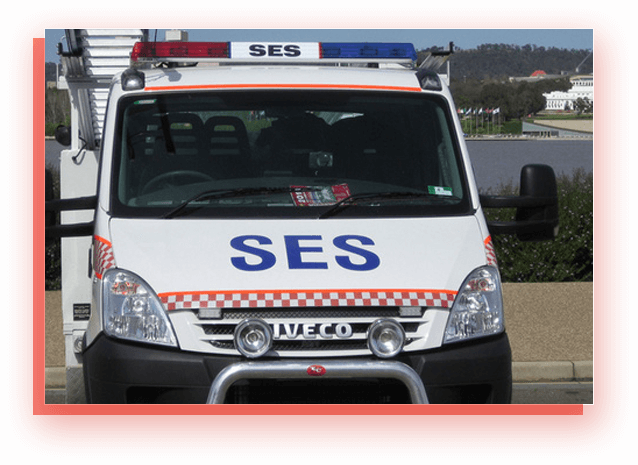
If your home has sustained any damage during the storm, you can call the SES on 132 500 and they may be able to help. For example, the SES offers some temporary roof repairs on your home if your roof has been notably damaged. It will keep you covered until you can have it fully repaired or replaced by a certified roofing company.
If you’ve been lucky and your home has remained undamaged, you should see if anyone in your neighbourhood wasn’t as lucky and needs your help. No matter how much or how little time you have spare, any amount of help will be much appreciated.
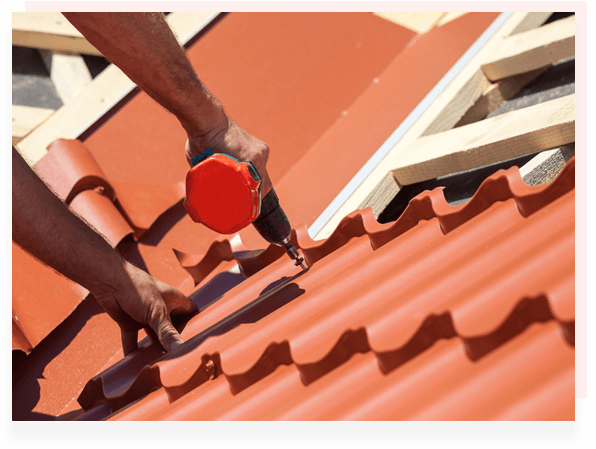
The best way to avoid significant roof damage during a storm is to make sure that it is structurally sound before the start of storm season. Even the smallest crack or structural weakness can become a much larger problem when a vicious storm hits. Suddenly those cracked tiles have the potential of being blown off by the wind, or that slight structural weakness could face more substantial damage.
When you get the opportunity, it is worth getting your roof checked out by a professional roofing company for any signs of damage. The earlier in Storm Season (or even outside of Storm Season) you get this done, the better. That way, you can address any possible problem areas and get them resolved before a devastating storm hits.
We would also recommend having your roof inspected by a qualified and licensed roofing company after a severe storm events. The heavy rain, hail, and lightning that comes with Brisbane storms can cause damage that is difficult for you to discover, but could be found by experienced roofing tradesmen.
Even if your roof is in great condition prior to a severe storm, there is still the chance that it could sustain damage. Improper or infrequent roof maintenance will also speed up the process of deterioration.
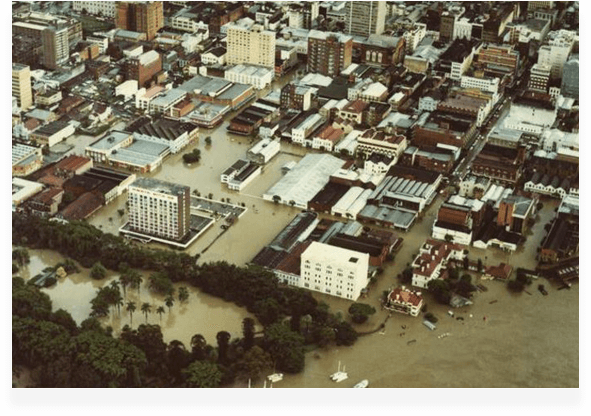
If you grew up in Brisbane, you have probably either experienced or heard a few stories about the 1974 floods that hit the city and its surrounding suburbs. Brisbane’s waterways experienced significant flooding, and the devastating force of the flood waters led to the destruction of 56 homes, $68 million worth of damage, 300 injuries, and, sadly, 14 people lost their lives. These floods, would become a point of reference when similarly intense flooding occurred in January 2011.
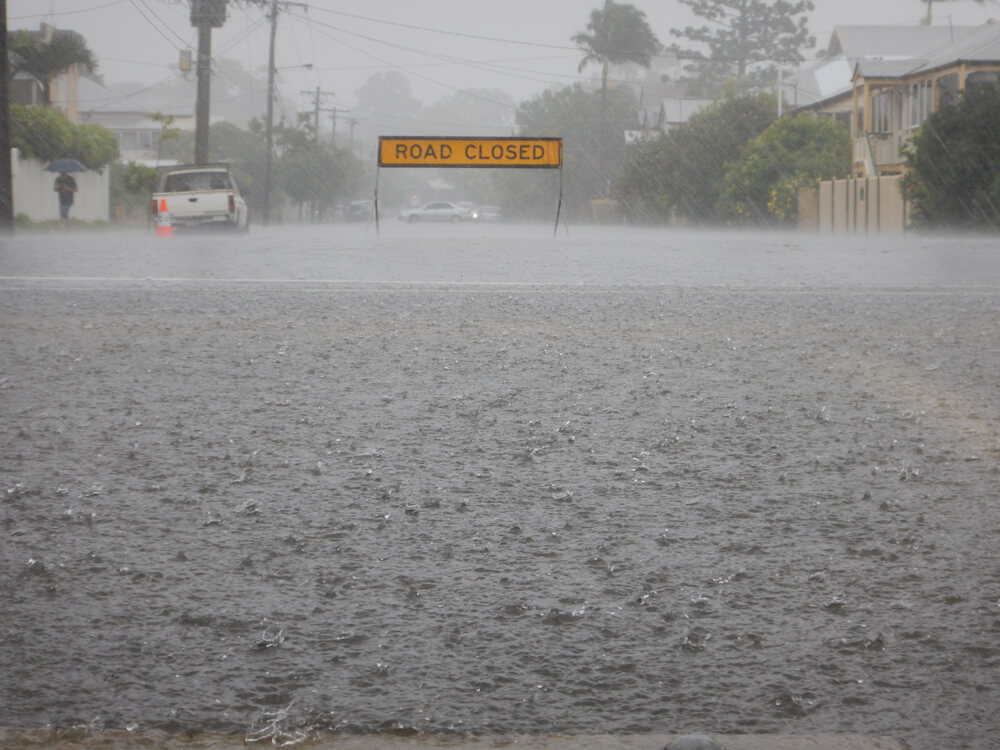
Occurring on 18 January 1985, a typical hot and humid summer day in Brisbane rapidly changed into the most devastating thunderstorm in the city’s history. Storm clouds began to form around 2:30 pm, but the full force of the storm would be felt just as many residents were heading home from work at around 5pm.
Wind gusts of up to 185 km/h were recorded, which was only worsened when hailstones the size of cricket balls started falling. The combination of hail and severe wind led to the hail flying horizontally into commercial buildings and homes, affecting areas within the Brisbane CBD and surrounding suburbs. This resulted in a large number of homes and residential properties having their windows completely smashed in. People took to hiding under tables just to avoid being hit.
The hail was then followed by extreme rainfall., causing further damage to the homes and buildings with damaged or broken windows and roofs. In the end, approximately 20% of vehicles in the city were damaged by hail, 20,000 buildings were damaged, and 80,000 residents lost power.
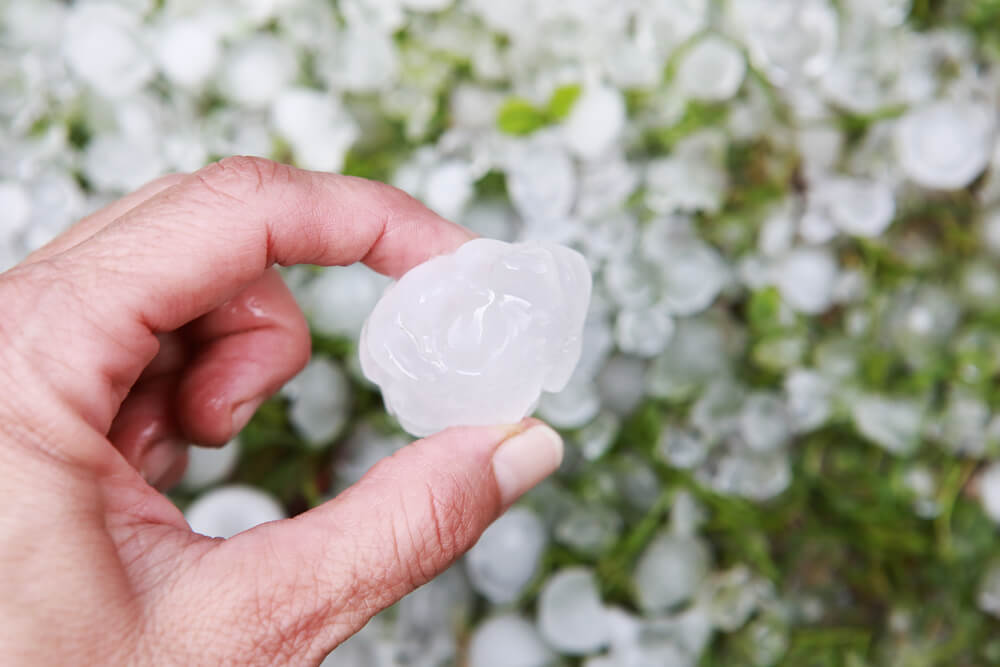
On 16 November 2008, Brisbane was hit by one of the worst storms in the almost 25 years since the 1985 thunderstorm. 200,000 homes ended up losing power thanks to conditions not unlike a cyclone. Hailstones the size of golf balls bombarded the city, and destroyed homes, cars and strong, rigid trees.
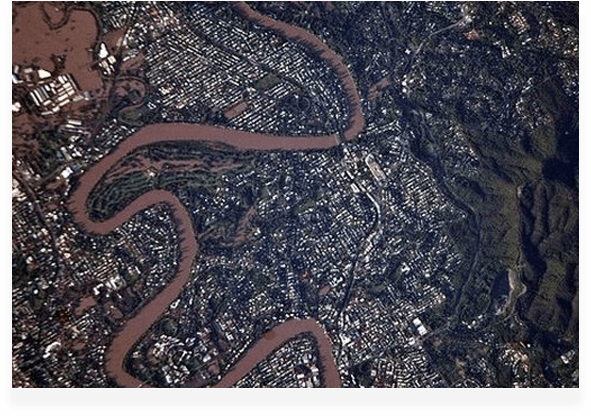
The 2011 floods remain one of the most recent severe storm events to have occurred in Brisbane. The floods themselves started in December 2010 in North Queensland. Substantial rainfall throughout the state allowed flood waters to continue moving south while maintaining substantial force. The flooding ultimately hit Brisbane on 11 January 2011, where low-lying areas were initially affected.
The flooding left many homes destroyed or severely damaged, with some residents being unable to return to their homes for more than a year after the flooding occurred. Basic food and water supplies diminished in certain areas, and controversies surrounding denied flood claims and whether or not the floods could have been avoided became key points of discussion in the aftermath.
Despite the more sombre aspects of the incident, including the loss of 38 lives throughout Queensland, the support Queenslanders showed one another in the wake of the floods helped create a greater sense of unity throughout the state.
Read more about types of storms and the damage they can do here.
An important step in preparing for severe storms is to have a storm kit on hand. Brisbane City Council’s official storm kit includes the following items:
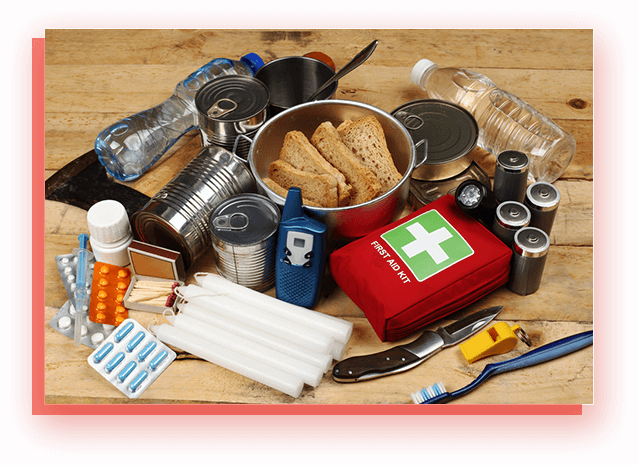
If you have young children or pets, you should also make sure to have the appropriate emergency items for their needs. That could include baby formula, nappies, change of clothes, blankets, toys and pet food.
Sometimes you have no way of avoiding being caught out when a storm approaches – it may hit your area earlier than expected or a weather forecast turns out being wrong.
When it’s a situation where a storm may just be a few minutes away, remember to bring inside any potentially dangerous outdoor objects if you’re at home. If you’re caught driving, try to find somewhere to park that is away from creeks, low-lying land and tall trees.
If you’re on foot when a storm is about to roll through, find some form of shelter ASAP, but try to avoid taking shelter under trees and metal roofs. If you’re at work or in another residential or commercial place, remain there and wait until the storm passes.
Below are some numbers, websites, social media accounts, and radio stations that are of benefit to know in the event of a severe storm hitting Brisbane.
The thing that matters most when it comes to Brisbane’s storm season is to ensure that you and your loved ones are safe. Your home is not just where you live, but also your first point of safety when severe weather conditions roll through.
By taking the measures we’ve listed in this guide, from the preparatory phases to the right steps to take after the storm, you’ll be taking positive strides towards staying safe. While Brisbane storms can be severe, as long as you’re prepared and are aware of just how powerful these storms can be, you should find them easier to deal with.
We hope you have found the information contained in this guide beneficial, and wish you the best of luck as Brisbane’s storm season goes into full swing.
If your roof happens to sustain any damage during a storm or you’re concerned it has some damage that could worsen were a storm to happen, Roo Roofing can help you out. Give us a call on 1300 734 148 or visit www.rooroofing.com.au for a free quote.